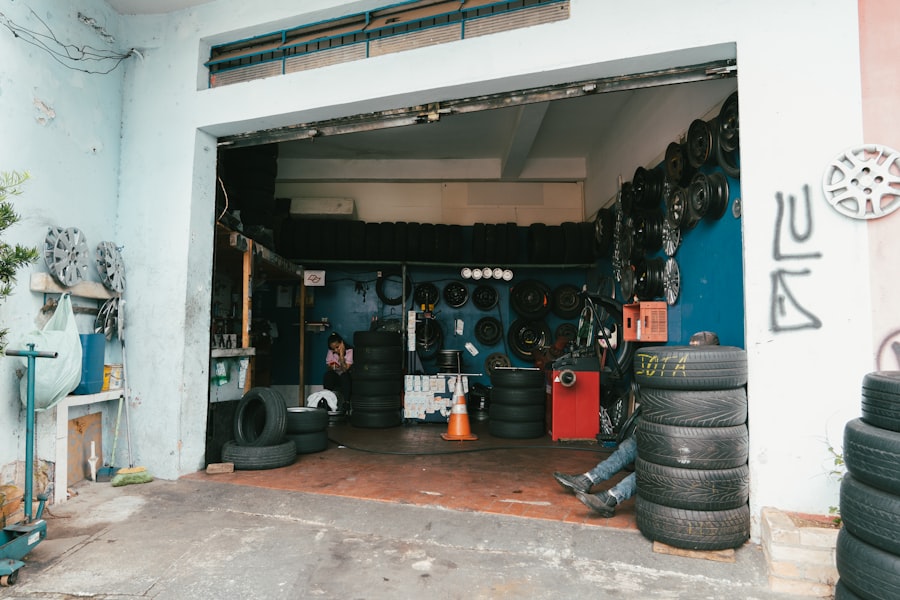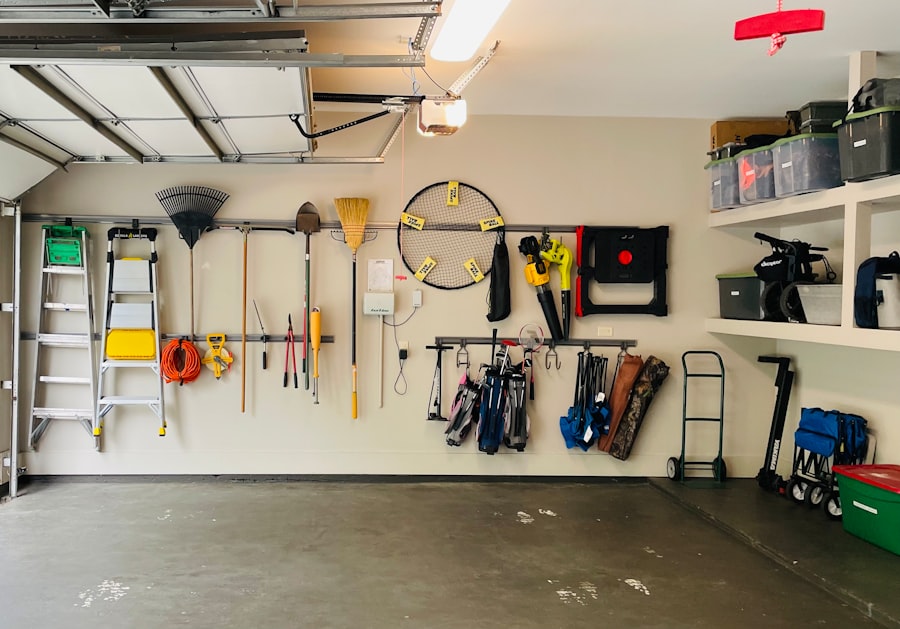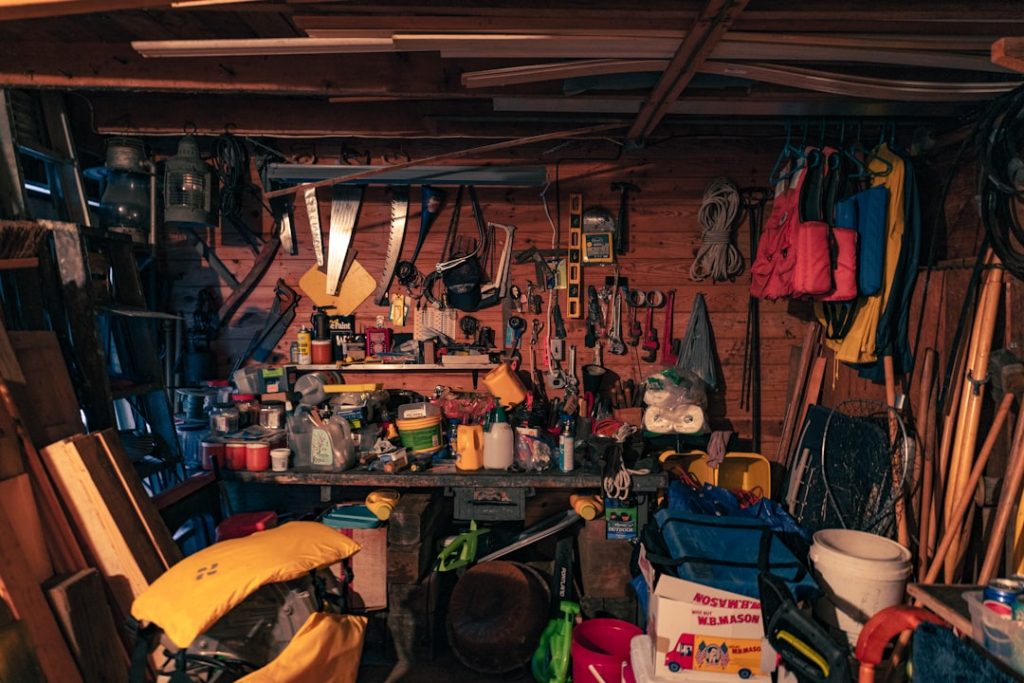Before embarking on any organizational project, it is crucial to first understand the space you are working with. This involves a thorough assessment of both your closet and garage, as these areas often become catch-alls for items that do not have a designated place. Begin by taking a step back and observing the layout of your closet and garage.
Consider the dimensions, the types of items stored, and how frequently you access them. For instance, in a closet, you might find clothing, shoes, accessories, and seasonal items all jumbled together. In a garage, tools, sports equipment, gardening supplies, and holiday decorations may be competing for space.
Once you have a clear picture of what you are dealing with, it’s time to take inventory. Make a list of the items in each space, noting their condition and how often you use them. This inventory will serve as a foundation for your organizational strategy.
For example, if you discover that you have multiple pairs of shoes that you haven’t worn in years, it may be time to reconsider their place in your closet. Similarly, if your garage is filled with tools that are rusted or broken, it’s essential to identify these items early on. Understanding your space is not just about recognizing what you have; it’s also about determining what you truly need and how best to utilize the available area.
Key Takeaways
- Start by thoroughly assessing your closet and garage to understand your storage needs.
- Declutter by removing items you no longer need to create more space.
- Use appropriate storage tools like shelves, hooks, and bins to organize effectively.
- Categorize items by type and function, and create designated zones for easy access.
- Maintain organization with clear labeling and regular reassessment of your storage system.
Purging and Decluttering: Getting Rid of Unnecessary Items
Once you have assessed your closet and garage, the next step is purging and decluttering. This process can be daunting, as it often requires making tough decisions about what to keep and what to let go. A useful strategy is to adopt the “one-year rule,” which suggests that if you haven’t used an item in the past year, it’s likely that you won’t use it in the future.
This rule can be particularly effective in closets where clothing items may linger long after they’ve gone out of style or no longer fit. In addition to the one-year rule, consider the emotional attachment you may have to certain items. Sentimental value can cloud judgment, making it difficult to part with things like old concert t-shirts or childhood toys.
To navigate this emotional landscape, try taking a photograph of the item before letting it go. This way, you preserve the memory without the physical clutter. For garage items, think about whether they serve a practical purpose or if they are simply taking up space.
Tools that are broken or outdated should be discarded or recycled, while items that are still functional but no longer needed can be donated or sold.
Utilizing Storage Solutions: Choosing the Right Organizational Tools

With a clearer understanding of what to keep and what to discard, the next step is to choose the right storage solutions for your closet and garage. The market is flooded with organizational tools designed to maximize space and improve accessibility. In closets, consider using modular shelving units that can be adjusted to fit your specific needs.
These units allow for flexibility as your storage requirements change over time. Additionally, drawer organizers can help keep smaller items like accessories or undergarments neatly arranged. In garages, storage solutions can vary widely based on the types of items being stored.
Heavy-duty shelving units are ideal for tools and larger equipment, while clear plastic bins can help categorize smaller items like screws, nails, or gardening supplies. Wall-mounted pegboards are another excellent option for keeping tools visible and easily accessible. By investing in quality storage solutions tailored to your specific needs, you can create an organized environment that not only looks good but also functions efficiently.
Categorizing and Sorting: Organizing Items by Type and Function
| Category | Type | Function | Example Items | Sorting Criteria | Common Use Case |
|---|---|---|---|---|---|
| Office Supplies | Writing Instruments | Writing and Marking | Pens, Pencils, Markers | Ink Type, Color, Tip Size | Organizing desk drawers |
| Kitchenware | Cutlery | Cutting and Eating | Knives, Forks, Spoons | Material, Size, Purpose | Setting table arrangements |
| Electronics | Mobile Devices | Communication and Computing | Smartphones, Tablets | Operating System, Brand, Screen Size | Inventory management |
| Clothing | Outerwear | Protection and Warmth | Jackets, Coats | Material, Season, Size | Seasonal wardrobe sorting |
| Tools | Hand Tools | Manual Work | Hammers, Screwdrivers | Function, Size, Handle Type | Workshop organization |
Once you have selected your storage solutions, it’s time to categorize and sort your items by type and function. This step is essential for creating an organized system that allows for easy access and retrieval of items when needed. In your closet, consider grouping clothing by season or occasion—casual wear on one side and formal attire on the other.
Within each category, further sort by color or style to create a visually appealing arrangement that makes getting dressed a breeze. In the garage, categorization can be approached similarly but may require more specific groupings based on function. For example, create distinct zones for gardening tools, automotive supplies, and sports equipment.
Use labeled bins or containers to keep smaller items organized within these categories. By establishing clear categories and sorting items accordingly, you not only streamline the process of finding what you need but also make it easier to maintain order over time.
Maximizing Vertical Space: Utilizing Shelves, Hooks, and Hanging Storage
One of the most effective ways to enhance organization in both closets and garages is by maximizing vertical space. Often overlooked, vertical storage can significantly increase your available area without requiring additional floor space. In closets, consider installing shelves above hanging rods to store less frequently used items like seasonal clothing or extra bedding.
Additionally, using cascading hangers can help save space while keeping clothes visible and accessible. In garages, vertical storage solutions can take many forms. Wall-mounted shelves can hold bins filled with tools or sports equipment off the ground, while hooks can be used to hang bicycles or ladders securely against the wall.
Overhead storage racks are another excellent option for utilizing ceiling space—perfect for storing bulky items like holiday decorations or camping gear that are only used occasionally. By thinking vertically, you can create a more organized environment that maximizes every inch of available space.
Creating Zones: Designating Areas for Specific Items and Activities

Creating zones within your closet and garage is an effective way to maintain organization and ensure that everything has its place. In a closet setting, designate specific areas for different types of clothing—such as work attire, casual wear, and workout clothes—so that you can quickly find what you need without rummaging through everything else. You might also create zones for accessories like belts and scarves by using dedicated organizers or hooks.
In garages, zoning becomes even more critical due to the variety of items stored in this multifunctional space. Establish clear areas for gardening supplies, automotive tools, sports equipment, and seasonal decorations. This not only helps in locating items quickly but also encourages family members to return things to their designated spots after use.
By creating zones tailored to specific activities or item types, you foster an organized environment that promotes efficiency and reduces clutter.
Labeling and Maintenance: Keeping Your Organized Spaces Tidy and Functional
Labeling is an often-overlooked aspect of organization that can significantly enhance the functionality of your closet and garage. Once you have categorized and sorted your items into designated zones, take the time to label bins, shelves, and containers clearly. This practice not only helps you quickly locate items but also assists others in your household in returning things to their proper places after use.
For example, labeling a bin as “Gardening Tools” makes it immediately clear what belongs inside without having to open it. Maintenance is equally important in keeping your organized spaces tidy over time. Set aside a few minutes each week to assess your closet and garage—this could involve returning misplaced items to their designated zones or reevaluating whether certain items still belong in those spaces.
Consider implementing a seasonal review where you reassess your belongings every few months; this will help prevent clutter from accumulating again and ensure that your organizational systems remain effective.
Reassessing and Reorganizing: Regularly Updating and Adjusting Your Storage Systems
The final step in maintaining an organized closet and garage is regularly reassessing and reorganizing your storage systems as needed. Life changes—such as new hobbies, changes in family size, or shifts in personal style—can all impact how you use these spaces over time. Therefore, it’s essential to remain flexible and willing to adjust your organizational strategies accordingly.
Schedule periodic reviews of your closet and garage—perhaps every six months—to evaluate what is working well and what isn’t. During these assessments, consider whether certain storage solutions still meet your needs or if new tools could enhance organization further. For instance, if you’ve taken up a new hobby that requires additional supplies, you may need to create a new zone in your garage specifically for those items.
By staying proactive about reassessing your spaces, you ensure that they continue to serve their intended purpose effectively while adapting to your evolving lifestyle.



